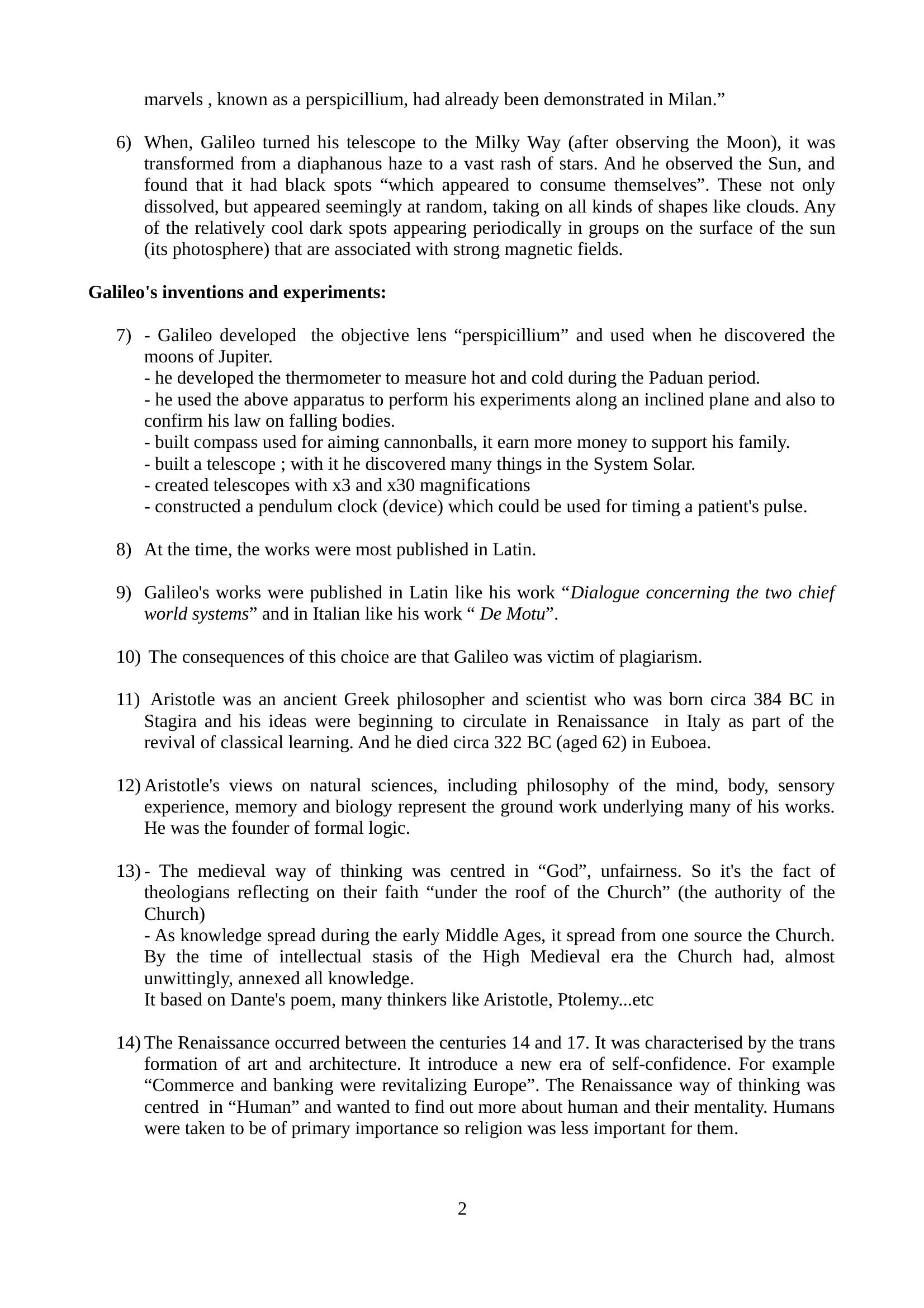GALILEO
Publié le 16/10/2015

Extrait du document
«
marvels , known as a perspicillium, had already been demonstrated in Milan.”
6) When, Galileo turned his telescope to the Milky Way (after observing the Moon), it was
transformed from a diaphanous haze to a vast rash of stars.
And he observed the Sun, and
found that it had black spots “which appeared to consume themselves”.
These not only
dissolved, but appeared seemingly at random, taking on all kinds of shapes like clouds.
Any
of the relatively cool dark spots appearing periodically in groups on the surface of the sun
(its photosphere) that are associated with strong magnetic fields.
Galileo's inventions and experiments:
7) - Galileo developed the objective lens “perspicillium” and used when he discovered the
moons of Jupiter.
- he developed the thermometer to measure hot and cold during the Paduan period.
- he used the above apparatus to perform his experiments along an inclined plane and also to
confirm his law on falling bodies.
- built compass used for aiming cannonballs, it earn more money to support his family.
- built a telescope ; with it he discovered many things in the System Solar.
- created telescopes with x3 and x30 magnifications
- constructed a pendulum clock (device) which could be used for timing a patient's pulse.
8) At the time, the works were most published in Latin.
9) Galileo's works were published in Latin like his work “ Dialogue concerning the two chief
world systems ” and in Italian like his work “ De Motu ”.
10) The consequences of this choice are that Galileo was victim of plagiarism.
11) Aristotle was an ancient Greek philosopher and scientist who was born circa 384 BC in
Stagira and his ideas were beginning to circulate in Renaissance in Italy as part of the
revival of classical learning.
And he died circa 322 BC (aged 62) in Euboea.
12) Aristotle's views on natural sciences, including philosophy of the mind, body, sensory
experience, memory and biology represent the ground work underlying many of his works.
He was the founder of formal logic.
13) - The medieval way of thinking was centred in “God”, unfairness.
So it's the fact of
theologians reflecting on their faith “under the roof of the Church” (the authority of the
Church)
- As knowledge spread during the early Middle Ages, it spread from one source the Church.
By the time of intellectual stasis of the High Medieval era the Church had, almost
unwittingly, annexed all knowledge.
It based on Dante's poem, many thinkers like Aristotle, Ptolemy...etc
14) The Renaissance occurred between the centuries 14 and 17.
It was characterised by the trans
formation of art and architecture.
It introduce a new era of self-confidence.
For example
“Commerce and banking were revitalizing Europe”.
The Renaissance way of thinking was
centred in “Human” and wanted to find out more about human and their mentality.
Humans
were taken to be of primary importance so religion was less important for them.
2.
»
↓↓↓ APERÇU DU DOCUMENT ↓↓↓
Liens utiles
- Le personnage de GALILEI Galileo de Bertolt Brecht
- EXPÉRIMENTATEUR (L’) (résumé) de Galileo Galilei
- Galileo Ferraris par Pietro Pagnini Consultore al Museo della Storia, Florence En 1884,
- Galilée ( Galileo Galilei.
- Galileo (Galileo Galilei) - ciencia y tecnologia.
















